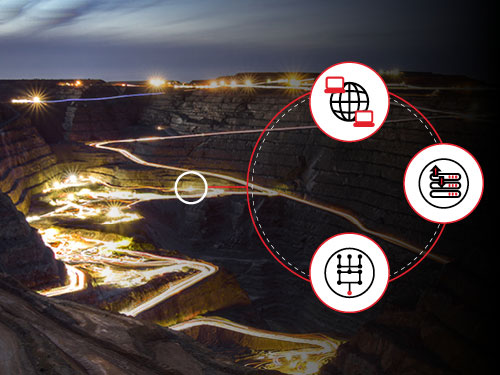
Right-sized networks to power mining of the future
Connectivity is an essential element of the mine of the future to power smart mines driven by sensors, automation, big data and secure network connectivity. What should mining leaders consider when looking at connectivity solutions to power their smart mines today and into the future?
South African mines, while often situated in isolated rural areas, are certainly not off the beaten track when it comes to digital transformation. In fact, we see mining players moving to become leaders of the Fourth Industrial Revolution (4IR) in South Africa.
They are investing heavily in technologies to address key concerns such as safety, lower outputs, and rising costs, and transforming core operations by adopting Artificial Intelligence (AI) and Internet of Things (IoT) solutions in their plants and throughout the supply chain.
A study carried out last year by PwC and the Minerals Council of South Africa assessed the impact of the 4IR on the mining industry and found that investment in digital technologies is soaring, with 25% of respondents spending an average of R166 million a year on technologies such as Industrial IoT (IIoT) and solutions to become more data driven. Most mining companies said their digital investments were expected to yield a throughput increase of between 10% and 30%, and a reduction in costs of over 10%.
Advanced technology is already making mining safer and more sustainable with automation, robotics, analytics and cloud computing enhancing efficiency and safety, and increasing productivity. Analytics and AI are giving mines insight into real-time performance and enabling proactive maintenance with resulting reductions in downtime and losses.
Exciting research and future innovations promise to deliver even more benefits for the local mining sector. Real-time information management systems such as those outlined in the Mandela Mining Precinct (MMP) RTIMS research project promise to transform traditional mining operations, increase efficiency and reduce costs, but their success rests heavily on the right enabling network communications and infrastructure.
The right communications network is not necessarily the one with the biggest pipes and highest speeds. In mining, with myriad applications and data requirements across sprawling and remote sites, careful analysis and planning and bespoke architecture is needed to achieve the crucial balance between speed, capacity, performance and cost.
Communications infrastructure needs to be right-sized and integrated to deliver the connectivity and performance required without over-investment.
What does this mean in practice? Each facet of the operation needs to be assessed with careful consideration of its current and future connectivity requirements. IoT for asset tracking, for example, may not need high-capacity infrastructure, but it will require solutions offering low latency and low cost.
On the other hand, IIoT where human health and safety are at stake, such as for autonomous vehicles, requires high-speed, secure and reliable connectivity. AR, VR, digital twin and analytics tools will need higher speed and capacity, while enterprise Wi-Fi connecting underground and surface operations also need to be secure, robust and cost effective.
A combination of Wi-Fi 6 and 5G may be the best fit for remote sites requiring high-performance connectivity in a range of environments, and in mission-critical converged WANs, the focus needs to be on reliability and scalability.
At facilities in particularly isolated areas, fibre may not be an option, and satellite and microwave links may need to be deployed and optimised to assure secure and reliable voice and data traffic.
Some mining organisations may require dedicated internet or vast private networks across their various sites, while Global SD-WAN may be needed for multinational operations. Many mines may wish to extend high-speed access to their employees and local communities in future, with high capacity and low cost a consideration.
All of these networks must also be seamlessly integrated into operational, control and monitoring systems. In industrial environments, this can mean integrating into legacy analogue systems, requiring devices and middleware to solve the communication gap.
On top of this, any networks need to be simple to deploy, manage and scale. With software-defined networking solutions and managed network security, mines can benefit from future-proofed and right-sized networks that meet their current needs at a manageable cost. They will also need to be scalable to cope with increasing capacity demand and underpin their evolution into the Fourth Industrial Revolution.










